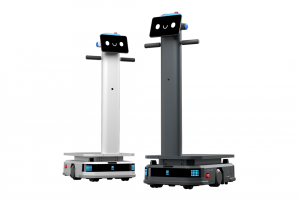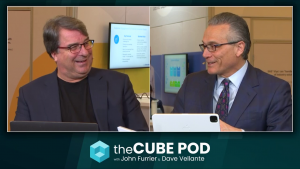Facebook Boosting Its Edge Network, Rethinking Data Center Design
![]() Facebook has decided that its photo delivery needs to get even faster, and is building out its own edge network infrastructure to get there. That nugget comes from the GigaOM Structure conference by Facebook VP Frank Frankovsky, in conversation with GigaOM’s Stacey Higginbotham.
Facebook has decided that its photo delivery needs to get even faster, and is building out its own edge network infrastructure to get there. That nugget comes from the GigaOM Structure conference by Facebook VP Frank Frankovsky, in conversation with GigaOM’s Stacey Higginbotham.
Netflix, of all companies, has been repeatedly brought up here at Structure as a proof point for one concept or another: Rackspace Hosting CEO Lew Moorman mentioned Netflix’s recent call for a scalable Amazon EC2 clone during his argument for a more open cloud (more on that tomorrow), and now Facebook’s announcement calls to mind Netflix’s recent decision to build Open Connect, its own content delivery network (CDN).
Facebook may not serve as many pages per day as, say, Google (I see estimates that place Facebook’s daily share of web traffic in terms of actual data moved around 1.5 percent), but photos are increasingly driving traffic to the social network, which means it may or may not be time to invest in new services (If you’re wondering how Instagram may play into this, you’re not alone). But it’s definitely time for Facebook to deepen its investment into speeding up photo delivery to end users.
A point of clarification: Higgenbottom updated her own write-up of the conversation to note that Facebook isn’t nudging out its own edge network partners, but rather placing servers in ISP point of presence facilities.
Frankovsky’s talk started with a shout-out to the Open Compute Project, a Facebook-led industry consortium that tries to promote better, smarter, more efficient data center designs, which has at least partially led to things like Facebook only requiring one administrator per 10,000 servers, though he stayed mum on how many servers Facebook actually uses.
Part of Frankovsky’s grand plan for the company’s data centers includes the so-called deconstruction of the server, allowing for greater compute density and what he refers to as a “subscription model for chips.” Right now, every three years on average, a server gets replaced, which means tearing out the whole thing and putting in something new. That’s way too much waste, from replacement costs to shipping costs even to the carbon footprint of getting a new one from the factory to your floor. A more modular approach – exemplified by the Open Compute Project’s recent Open Rack standard – enables less waste and greater efficiencies.
Another area of focus as Facebook attempts to innovate in the data center, Frankovsky says, is on the maximization of resource utilization efficiency within the data center. As you may imagine, this approach to rethinking storage, compute, squeezing every ounce of performance out of existing hardware, and standards hasn’t made Facebook very many friends in the storage and server community. The fact that the talk was entitled “Breaking free from a vendor-defined ecosystem and beyond” tells you everything you need to know.
Regardless, Frankovsky thinks that the Open Compute Project is helping bridge an important gap, as data center operators and enterprises try to reconfigure to better meet the needs of large-scale computing, including the unique demands of big data analytics. And there’s plenty of room for innovation in just about every part of the matter.
Watch Frankovsky’s GigaOM Structure talk here. And for a little more insight on how Facebook approaches service delivery and engineering, we had Facebook’s Jonathan Gray in The Cube back in February:
A message from John Furrier, co-founder of SiliconANGLE:
Your vote of support is important to us and it helps us keep the content FREE.
One click below supports our mission to provide free, deep, and relevant content.
Join our community on YouTube
Join the community that includes more than 15,000 #CubeAlumni experts, including Amazon.com CEO Andy Jassy, Dell Technologies founder and CEO Michael Dell, Intel CEO Pat Gelsinger, and many more luminaries and experts.
THANK YOU













